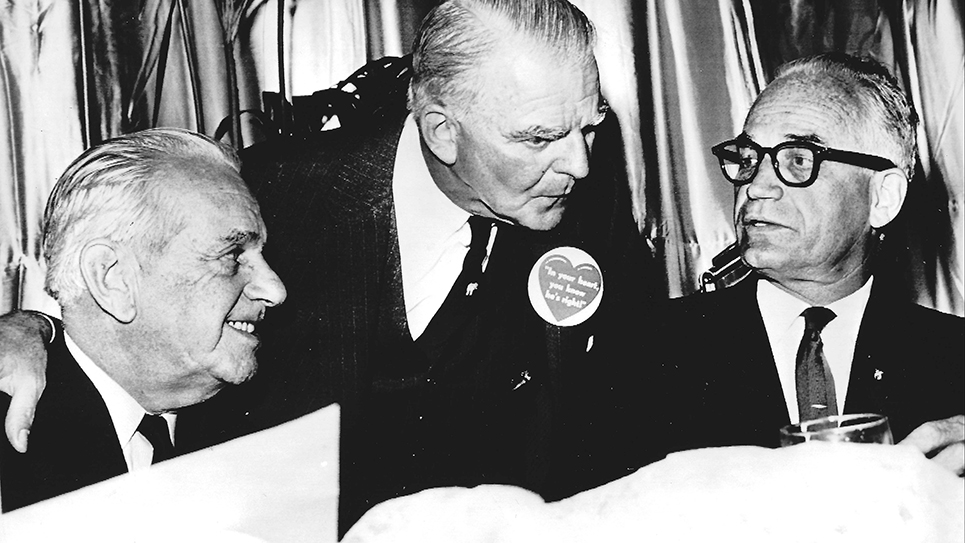By Richie Beeler
Papal prophecy intriguing as conclave looms
For the second time in less than a decade, the world is awaiting a truly historic event as Cardinals from around the world prepare to gather at the Vatican to elect the next Pope. Most sources agree that the closed door meeting in the Sistine Chapel, during which the new leader of the Catholic Church will be chosen, could take place within the week.
History is made any time a Pope is elected. More than one billion people on this planet identify themselves as Catholic, at least at some level. It could easily be argued that the Pope is the most influential person on earth at any given time. And at this particular given time, the historic significance is even greater. Some believe there may even be prophetic significance as well.
To begin with, this is no ordinary papal election. The circumstances surrounding the vacancy at the Vatican are unprecedented. Pope Benedict XVI resigned last week, citing health concerns. It was the first time in nearly 600 years that a pontiff had voluntarily stepped down. And it was the ONLY time it has ever been done for health reasons. Popes simply do not resign because they are old and infirm. They serve until their death.
Some would argue that Pope Benedict’s decision was noble. He simply did not feel he could do justice to his responsibilities to a Church facing numerous cultural challenges. To be expected, there are also those who suspect something sinister might be afoot with such an abrupt departure. But still others are pointing to something much more fascinating – the mysterious prophecy of St. Malachy.
The prophecy concerns a vision that was reportedly experienced in 1139 by Malachy O’Morgain, who was a Catholic Archbishop. In this vision, Malachy claimed that he was given the identity of all the remaining Popes that would reign over the Catholic Church until the return of Christ. The identities of the Popes were revealed to him in a series of 113 Latin phrases, each that was to describe every successive pope. Supposedly the list was sealed in the Vatican archives and was first made public in 1595.
There have been many eerie similarities between some of the Popes of history and their corresponding Latin phrases. But where things get really interesting is in the 20th century. Here are the Latin names given to Malachy for the last ten Popes as well as the next Pope:
Leo XIII was Pope from 1878 until 1903. The Latin phrase corresponding to his reign was Lumen in coelo, which means “Light in the sky.” Pope Leo’s coat of arms contained a shooting star. Next on Malachy’s list was the phrase Ignis ardens, which means “burning fire.” The corresponding pontiff was Pope Pius X, whose “fiery” faith enabled him to be the first Pope given sainthood in over 400 years.
In 1914, Pius X was succeeded by Pope Benedict XV. Malachy’s Latin phrase for this Pope is one of the most chilling of all. Religio depopulata – “religion laid waste” – described the Pope who would preside over the Church during World War I, when literally millions of Catholics were killed.
The next Pope, Pius XI, faced a challenge every bit as intense as the Nazi regime began to take over Europe during his reign from 1922-1939. Malachy’s phrase for this Pope was Fides intrepida, or “unwavering faith.” His successor, Pius XII, was said to be one of the most mystical pontiffs in modern times, reportedly seeing many visions from God. The Latin phrase corresponding to his reign was Pastor angelicus, which means “angelic shepherd.”
In 1958, Pius XII was followed by one of the most beloved Popes in history. Pope John XXIII also bore a Latin phrase that was strikingly accurate. Malachy labeled this Pope Pastor et nauta, or “pastor and mariner.” Amazingly, John XXIII had been patriarch of Venice – Italy’s most important seaport. His successor, Paul VI, was described by Malachy with the phrase Flos florum (flower of flowers). His coat of arms was comprised of three fleurs de lis. Paul VI reigned from 1963 until his death in 1978.
Then is when the prophecy took an almost creepy twist. John Paul I, described by the phrase de medietate lunae, meaning “of the midst of the moon,” was Pope for 33 days and died, reigning from the midst of one lunar cycle to the next. He was succeeded by one of the greatest Church leaders in history, Pope John Paul II.
John Paul II was born in Poland in 1920 during a partial solar eclipse. He was buried on April 8, 2005 as another solar eclipse traversed parts of the earth. The Latin phrase Malachy ascribed to this particular Pope was De labore solis – “of the eclipse of the sun.”
The next Pope on Malachy’s list was described by the words Gloria olivae, which is translated “glory of the olive.” Upon his election, Cardinal Joseph Ratzinger chose the name Benedict XVI. It is said he chose the name not after Pope Benedict, but rather for St. Benedict, who was a monk after which the Benedictine order is named. The Benedictine order is also known as the Olivetans.
As the election of a new Pope approaches, students of this prophecy are intrigued by the coming events. And not the least of the reasons why is this: Malachy’s vision included 113 Popes. Benedict XVI was number 112. If the prophecy is to be believed, the Pope elected next week will be the last to reign before the return of Christ. Malachy’s phrase for this Pope is Petrus Romanus, or “Peter the Roman.” The current favorite to be chosen? Ghana’s Cardinal Peter Turkson.
It should be an exciting week at the Vatican.






